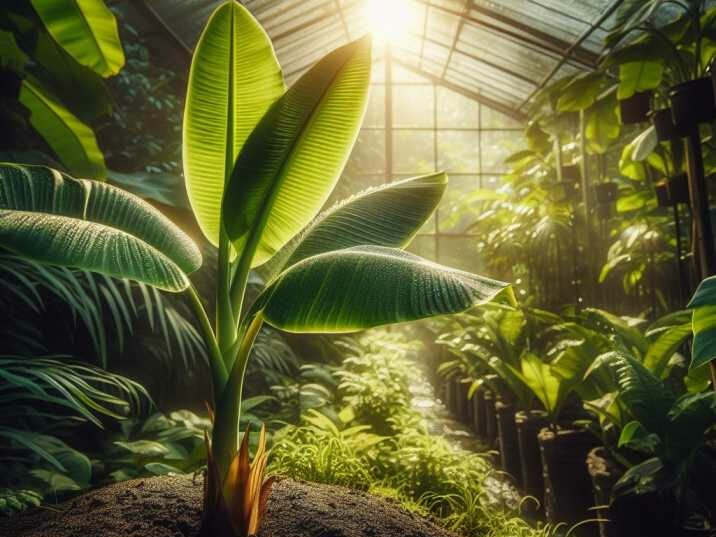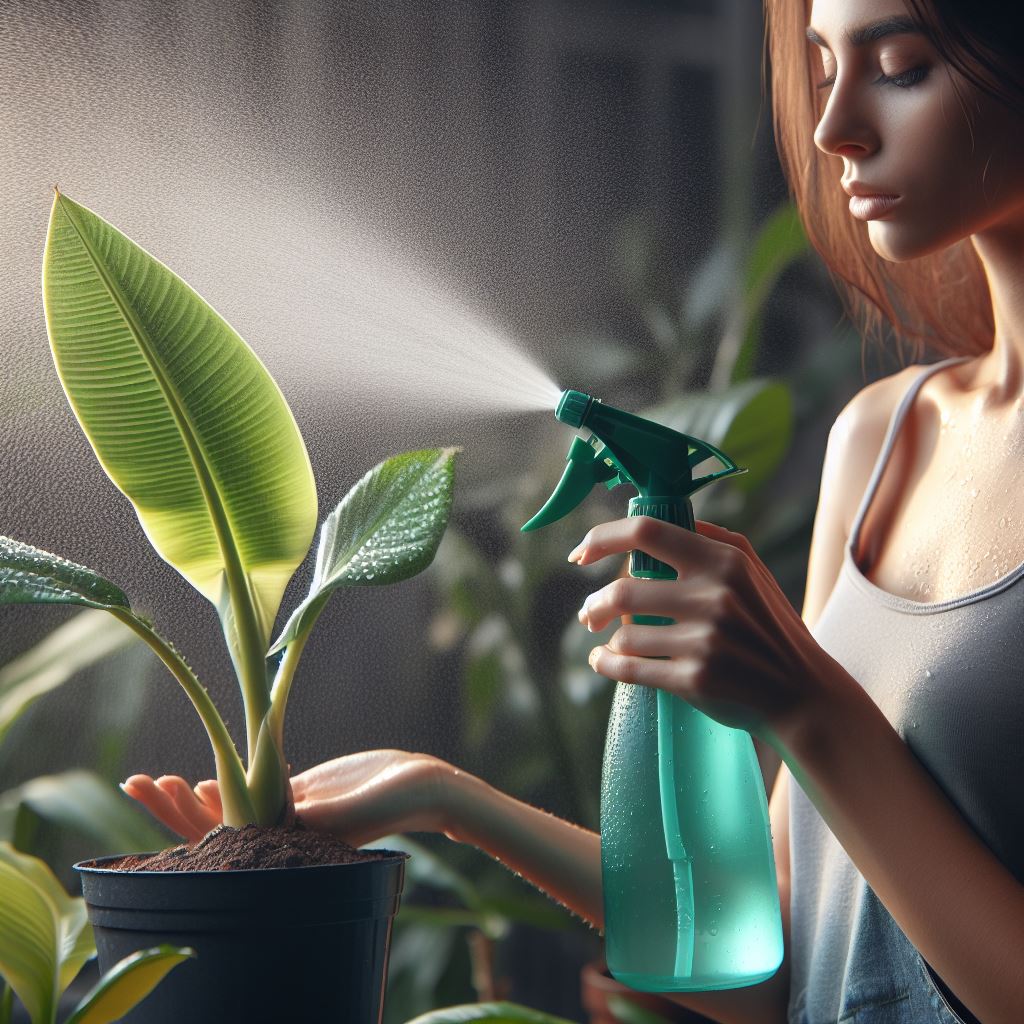Introduction:
Table of Contents
Banana plants are not only delicious but also remarkably versatile, making them a popular choice for home gardeners. However, these tropical plants require specific environmental conditions to flourish, especially when they are in their infancy. In this comprehensive guide, we’ll explore the essential steps to create a suitable microclimate for baby banana plants, ensuring they grow strong and healthy.

1. Understanding Microclimate for Baby Banana Plants
Banana plants, particularly in their early stages, thrive in warm, humid environments with ample sunlight. They require well-draining soil rich in nutrients, regular watering, and protection from harsh winds and extreme temperatures. Creating a microclimate that replicates these conditions is key to their success.
Choosing the Right Location
Select a location in your garden that receives plenty of sunlight, ideally 6-8 hours per day. Ensure the area is sheltered from strong winds and has good air circulation to prevent fungal diseases.
Soil Preparation
Prepare the soil by mixing organic compost or well-rotted manure to improve its fertility and drainage. Aim for a pH level of 6.0-7.0, slightly acidic to neutral, which is ideal for banana plants.
2. Providing Optimal Temperature and Humidity
Maintaining the right temperature and humidity levels is crucial for the healthy growth of baby banana plants.
Temperature Control
Baby banana plants thrive in temperatures between 75°F to 85°F during the day and 60°F to 70°F at night. Use mulch to regulate soil temperature and protect the roots from extreme heat or cold.
Humidity Management
Banana plants require high humidity levels, ideally between 50% to 70%. You can increase humidity by misting the plants regularly or placing a humidifier nearby.
3. Watering and Fertilizing Practices
Proper watering and fertilization are essential for supplying baby banana plants with the nutrients they need for vigorous growth.
Watering Guidelines
Water your baby banana plants deeply and evenly, ensuring the soil remains consistently moist but not waterlogged. Avoid overwatering, as it can lead to root rot.
Fertilization Tips
Fertilize your banana plants every 4-6 weeks during the growing season with a balanced fertilizer high in potassium and phosphorus. Avoid high-nitrogen fertilizers, as they can promote lush foliage at the expense of fruit production.
4. Protection from Pests and Diseases
Banana plants are susceptible to various pests and diseases, which can hinder their growth and development if left unchecked.
Pest Management
Keep an eye out for common pests such as aphids, mealybugs, and banana weevils. Use organic pesticides or neem oil to control infestations while minimizing harm to beneficial insects.
Disease Prevention
Prevent fungal diseases such as leaf spot and anthracnose by avoiding overhead watering and ensuring good air circulation around the plants. Remove and destroy infected leaves to prevent the spread of disease.
Table of Information About Microclimate for Baby Banana Plants:
| Aspect | Ideal Conditions |
|---|---|
| Sunlight | Bright, indirect sunlight |
| Temperature | 68-86°F (20-30°C) |
| Soil pH | 6.0-7.0 |
| Humidity | 50-70% |
| Watering Frequency | Every 1-2 days when soil is dry to touch |
| Wind Protection | Sheltered from strong winds |
| Pest and Disease Mgmt | Regular monitoring and organic controls |
Conclusion:
Creating a suitable microclimate for baby banana plants requires careful planning and attention to detail. By providing the right combination of sunlight, warmth, humidity, soil quality, and pest management, you can ensure your banana plants thrive and produce an abundant harvest. Follow the tips outlined in this guide, and enjoy the satisfaction of growing healthy, delicious bananas right in your own backyard.

FAQs (Frequently Asked Questions)
1. How often should I water my baby banana plants?
- Water baby banana plants when the top inch of soil feels dry to the touch, usually every 1-2 days depending on environmental conditions.
2. Can baby banana plants tolerate direct sunlight?
- Baby banana plants prefer bright, indirect sunlight and can be damaged by prolonged exposure to intense sunlight. It’s best to provide them with filtered or dappled sunlight.
3. What should I do if my baby banana plant gets infested with pests?
- If you notice pests such as aphids or mealybugs on your baby banana plants, you can manually remove them or use organic pest control methods such as neem oil or insecticidal soap.
4. How can I increase humidity around my baby banana plants?
- You can increase humidity by misting the leaves regularly with water, placing a tray of water nearby, or using a humidifier in the room where the plants are located.
5. Are baby banana plants suitable for indoor cultivation?
- Yes, baby banana plants can be grown indoors as long as they receive adequate sunlight, humidity, and proper care. Consider placing them near a sunny window or under grow lights for optimal growth.
